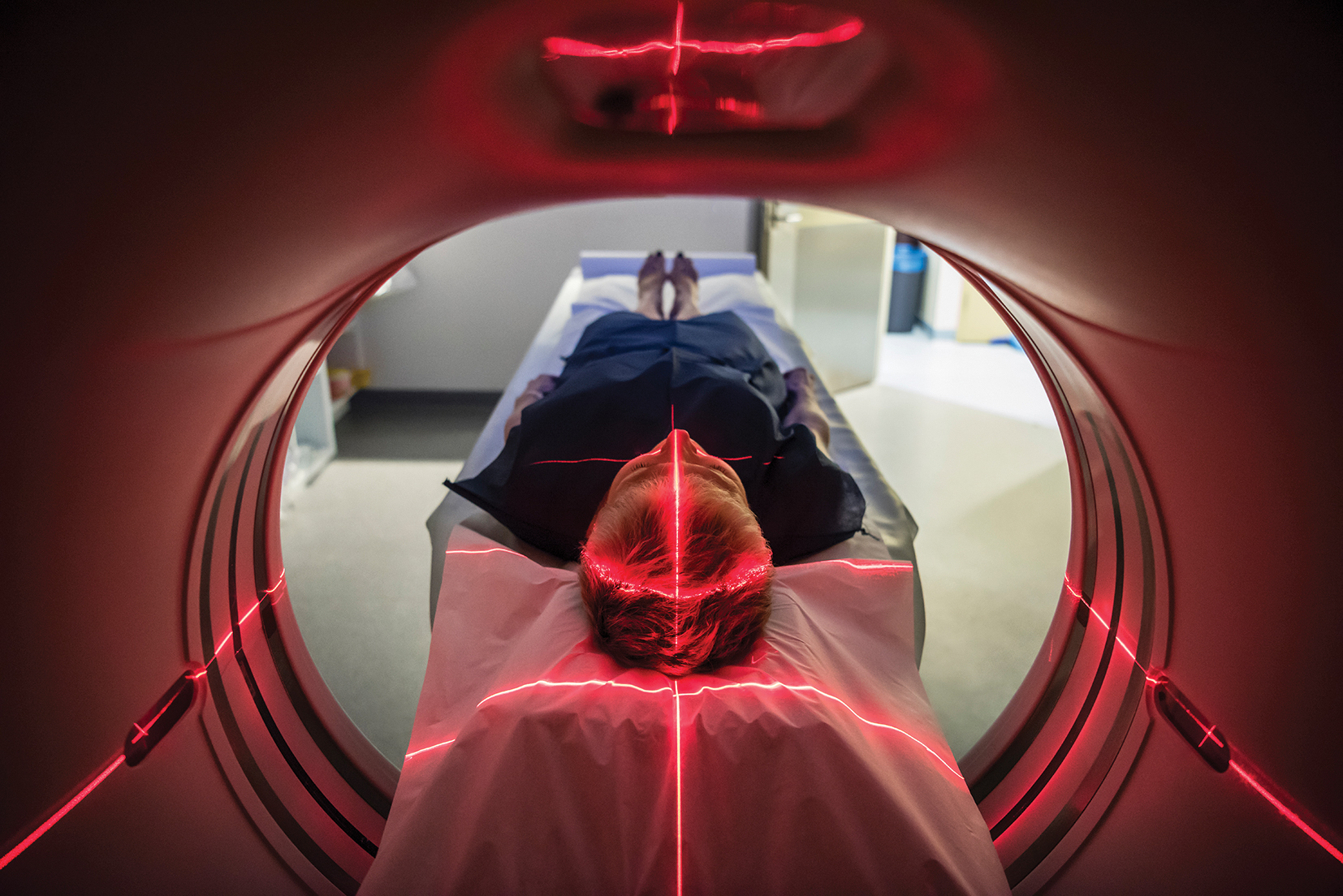Sleepy head, healthy brain?
July 1, 2021

Like babies and young children, some adults fight against sleep with all their might. They live their lives according to the mantra “sleep is for the weak”. When you start looking into sleep, however, you soon find many examples of the Psalmist David’s exclamation in the Bible that we are “fearfully and wonderfully made” (Psalm 139:14). With each passing year, scientific research discovers more and more amazing and intricate details about how our body functions, and how our modern lifestyle can send it out of kilter. The impact of sleep disruption or sleep disturbances are no exception. It turns out that the lack of a good night’s rest puts you at increased risk of all manner of problems
Take, for example, leptin and ghrelin. Leptin, a hormone, suppresses appetite; and ghrelin, a small protein, stimulates it. Together they help regulate our hunger throughout the day. In a large longitudinal sleep study known as the Wisconsin Sleep Cohort, the lives of more than a thousand adult participants were followed for over two decades.
Those getting by on less than eight hours of sleep each night had decreased leptin and increased ghrelin levels (a recipe for over-eating), and higher body mass index measures. Other studies have shown that these results also hold true for children and teenagers. A 2004 study published in the Annals of Internal Medicine found significant changes in leptin and ghrelin levels after just two nights of inadequate sleep in healthy young men. Relating to this, a 2017 review of 23 studies published in Nutrition & Diabetes noted that “insufficient sleep is associated with insulin resistance and impaired glucose tolerance”—both precursors to diabetes. A 2007 investigation published in Sleep Medicine Clinics allowed a group of healthy young men only four hours of sleep for six nights in a row. After this short time, scientists observed significant decreases in blood glucose clearance and an increase in insulin sensitivity which could potentially lead to insulin resistance. On top of this, it has been found that a lack of sleep can lead to high blood sugar levels in diabetics and healthy people alike. The results of this partial sleep deprivation are a reflection of how fine-tuned our bodies are that such significant health impacts occur in such a short space of time.
Sleeping to better immunity
Then there’s cytokines. This is a group of proteins released by the immune system to fight infections and inflammation. You can probably guess that they are released during sleep. Fewer cytokines are produced during inadequate or interrupted sleep. Research published in 2009 in the Archives of Internal Medicine exposed 153 participants to the common cold virus. Those who were getting less than seven hours of sleep per night were almost three times more likely to get a cold! During sleep, growth hormone is released into the blood stream. Even in adults, this hormone performs an important tissue-repair role. So, it turns out that sleep is also a great immune-boosting, body-healing agent. Sleep problems or issues with sleep, in contrast, put you at a higher risk of infection when compared to those who get their full rest.
Extensive research is now recognising an important implication for inadequate sleep in the development of dementias, with some stages of sleep being particularly important. There are multiple stages of sleep within a typical sleep cycle, which doctors have categories by measuring things like brain waves, blood pressure and other bodily functions during sleep tests. The first major stage of sleep is non-REM. According to the Sleep Foundation, non-REM sleep has three sub-stages, starting with lighter sleep and moving into deep, restorative sleep known as “slow wave sleep” (SWS). These stages are followed by Rapid Eye Movement (REM) sleep, during which dreaming occurs. There are four or five cycles of these phases throughout a night of sleep. The bulk of the SWS occurs in the earlier cycles, and the duration of the REM sleep increases through the cycles.

barandozdemir—Getty Images
Forgetting something?
Alzheimer’s disease is the most common type of dementia, accounting for around 70 per cent of cases. Logically, it’s also the most studied of the dementias. A 2019 review of evidence published in the International Journal of Molecular Sciences concluded that a range of evidence strongly supported the idea that “impaired sleep is a risk factor for the initiation and progression of Alzheimer’s disease”.
Alzheimer’s is characterised by two major features in the brain, and much of the research has focused on these. The first is insoluble deposits (or plaques) of a protein called Amyloid beta (Aβ). According to a 2014 article in Frontiers in Aging Neuroscience, it was widely believed that the “toxic accumulation” of Aβ is the underlying mechanism of brain cell death in Alzheimer’s disease. Amyloid beta fragments are small pieces sliced off from larger proteins. According to Bright Focus, an organisation that funds Alzheimer’s research, very small strands are soluble and can be flushed out of the brain. But longer strands are “sticky” and clump together, forming plaques between and around the nerve cells. While the plaques are not the only explanation offered for the interplay between Aβ and Alzheimer’s, they have been the primary focus of extensive research and treatment development.
The second major feature of the Alzheimer’s brain, which occurs inside the neurons, are neurofibrillary tangles that consist of tau protein. As detailed in Alzheimer’s News Today, tau proteins support the structure of microtubules which transport substances such as nutrients within the neuron. When tau proteins are misformed, the microtubule structure collapses, and tau tangles develop. These tangles block the transport system in the cells, and interfere with protein production, both of which result in cell death.
Neurological link
So where does sleep (or sleep loss) come into this? You’ve probably heard of the lymphatic system, but do you know about the glymphatic system? It was described and named in 2013, so it’s a relatively new area of research. The glymphatic system is a network of vessels that operates as a waste clearance system in the brain. It removes potentially neurotoxic metabolic waste products including Aβ and malformed tau. And when do you think the glymphatic system does most of its work? It has been widely observed that the glymphatic system is relatively inactive during wakefulness but ramps up during sleep. A 2020 review article in Sleep journal reported that during sleep, there is increased Aβ clearance from the brain, and that there is a growing body of evidence for the importance of SWS on Aβ levels. This is significant for people who experience poor sleep due to sleep disorders like sleep apnoea, periodic limb movement disorder, restless leg syndrome or insomnia because they may never get far enough through their sleep patterns to enter SWS.

johnnygrieg—Getty Images
Further, a study utilising positron emission tomography scans, which use radioactive tracers to identify areas of the brain not functioning properly, found that self-reported shorter sleep duration and poorer sleep quality were linked to significantly greater Aβ deposits. An animal study also found that long- term sleep restriction accelerates Aβ deposits. Studies have also shown that sleep deprivation increases tau levels and speeds up the spread of tau through neural networks. Although there is still much to be understood, this all adds up to a very convincing argument for prioritising adequate, good quality sleep.
It’s sobering to think that the demands and norms of our modern lifestyle, resulting in reduced sleep across the population, may be contributing to serious global health challenges such as diabetes and dementia. On the other hand, it’s exciting to know that by ensuring we get adequate sleep we can buoy many aspects of our wellbeing such as our immune system, energy levels, moods and mental health, memory, concentration, learning and creativity. A good night’s sleep really does seem to be the bedrock of good health.
Julie Hoey is a qualified science/maths teacher and librarian. She lives in Mulbring, NSW, with her husband and teen daughter.
Want something more? Get in touch with our help team with your questions or requests and we’ll do our best to help you. For more health information, sign up to our free Live Well course.









